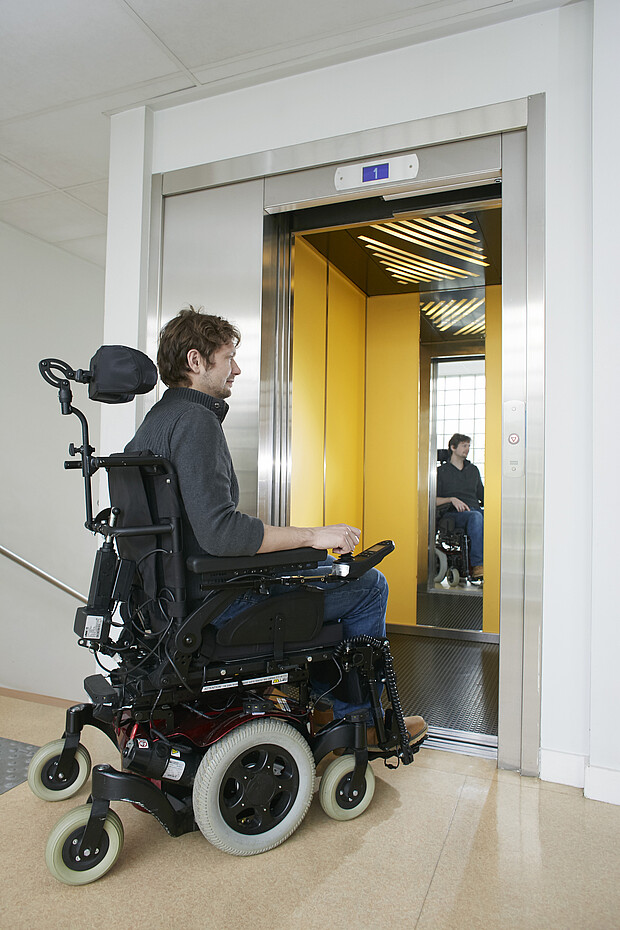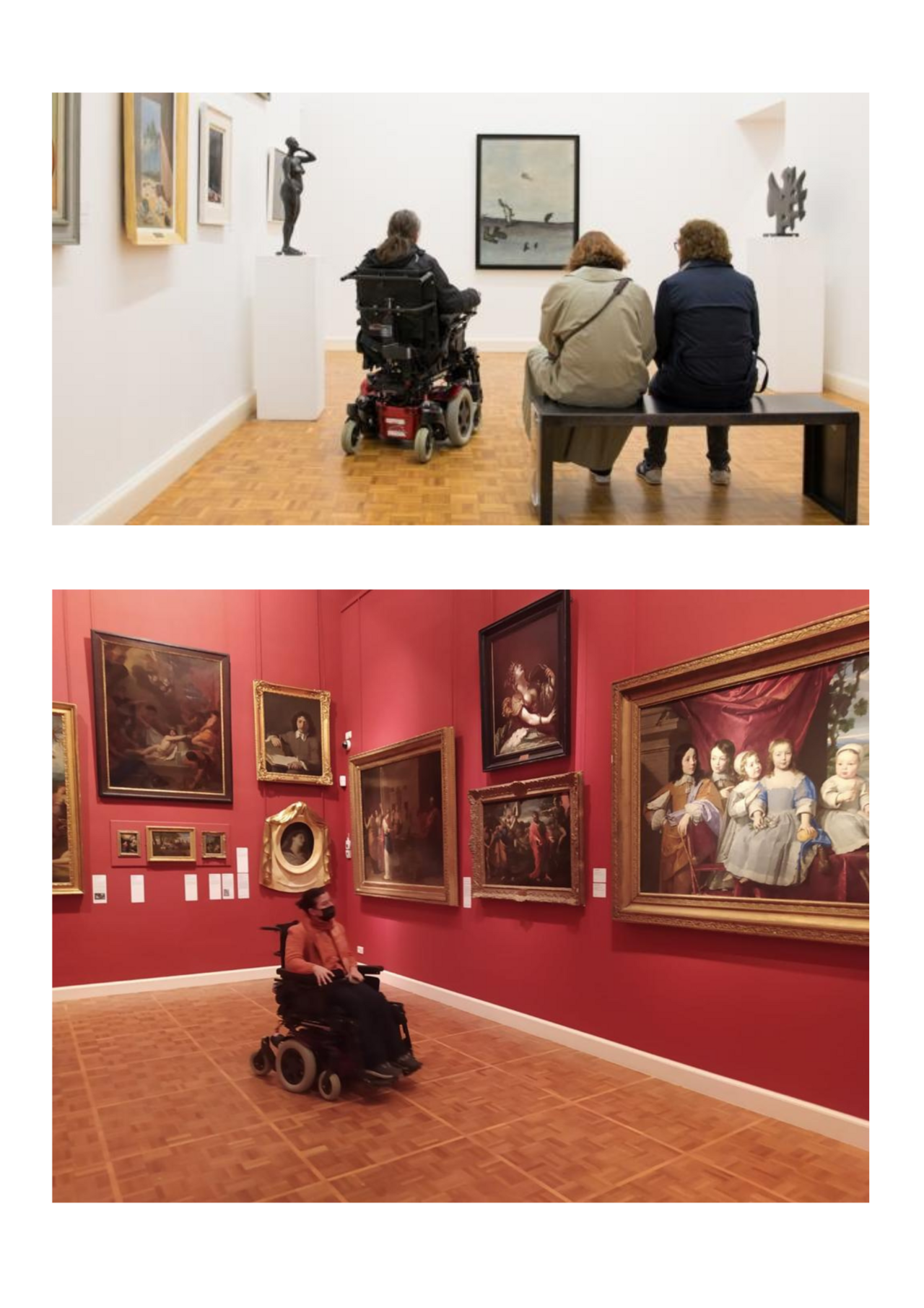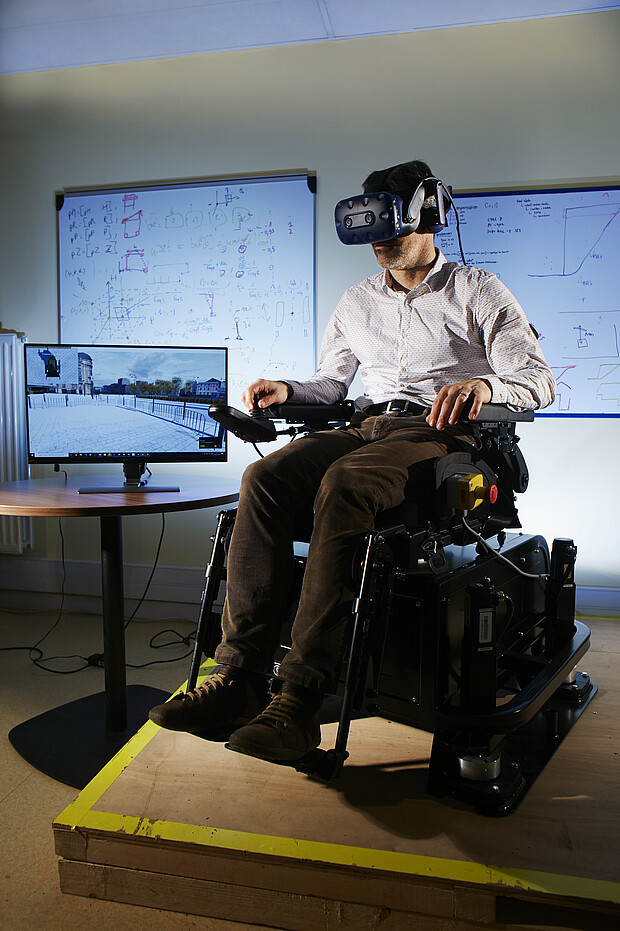
Fauteuil roulant intelligent
The issue of accidents with power wheelchair can lead therapists not prescribing a device or users stopping using their wheelchair (for example because of an evolutive condition or because of ageing). In fact, accidents resulting in personal injury and damage to the device are commonly observed and raise concern regarding whether or not a person should use a power wheelchair
Our robotic system aims to tackle this issue by ensuring safety while navigating with a power wheelchair, by means of collision avoidance. The proposed solution is a plug-and-play adjunction designed to be compatible and adaptable to any standard power wheelchair. It is ready to use after simply attached sensor units on the wheelchair frame and plugged the control unit directly onto the wheelchair communication bus. The system is then recognized as an additional module on the wheelchair. Once installed, few parameters can easily be tuned to personalize the solution to the user specific needs and requirements. Once set up after the quick parametrization, the user can select the "assistance mode" on the standard control interface and drive safely. This system adapts the velocity as needed with a shared control approach to provide collision avoidance by smoothly correcting the wheelchair trajectory when there is a risk of collision (link for publication). The solution either lets full control to the user or takes progressively the control while respecting user intent.
Such a solution can provide critical assistance to people who face difficulties to drive safely because of visual impairments, cognitive impairments or poor upper limb coordination. A wide range of end-users can benefit from this navigation assistance solution, such as ageing people in the loss of autonomy or people with post-stroke, traumatic brain injury, cerebral palsy, multiple sclerosis, unilateral neglect, neuromuscular diseases. Such a solution could reduce inpatient care period for people with heavy impairments as it has the potential to provide more autonomy and reduce caregivers burden. Moreover, it is likely to provide a major change in the use of power wheelchairs in nursing homes and specialized facilities as it prevents damages to infrastructures. This may in the end encourage insurances to become part of the payers and allow this technology to be accessible for everyone.
This solution has been co-designed from the emergence of the need of end-users and therapists who are really eager to benefit from such a solution in daily-life at home but also in care facilities or nursing homes. The close collaboration of all the stakeholders allowed to reach a system which was successfully tested with 300+ people from which 100+ were patients going through clinical trials. Particular efforts have been made to provide a solution which fits accessibility and use constraints.The more recent clinical trial assessing the benefit of the device is registered under the name "Evaluation on Standardized Circuits of the Interest of a Robotic Module of Assistance to the Driving of Patients With Neurological Disorders, in Difficulty Driving of Electric Wheelchairs" and ID n°NCT04259151. Results show the device to be indicated to assist and improve driving safety for power wheelchair drivers in driving difficulty. The study has been published in sept. 2023 (link).

Beyond the clinical trials, we organized several ecological experiments to assess the assistance provided in real-life setups, as well as societal impact and social acceptability of the device. The more recent ecological experiment involved 20 wheelchair users with various driving skills and consisted in driving a wheelchair equiped with our assistive solution in cultural places (2 museums located in Rennes, Brittany). Overall, the tests showed that the device was ready for real-life use with benefit not only for the user, but also to their relatives who accompanied them who quickly took confidence in the system and stopped being anxious about the risk of accident as they recognized the safety provided by our solution compared to standard wheelchair (link).
Our navigation assistance solution is:
- affordable,
- intuitive and easy to use,
- parametrizable to meet each user specific needs,
- installable on any standard wheelchair with plug-and-play directly on the wheelchair bus,
- adaptable in terms of sensor numbering and positioning,
- modular in terms of provided assistance needed by the user: one sensor unit can manage only the backward motion (elevator maneuveurs, etc.) while several sensor units can cover the entire wheelchair perimeter,
- low energy consumption thanks to a low computationnal cost algorithm and low energy consumption hardware: wheelchair's range is not impacted by the system,
- R-NET compatible,
- now ready for technological transfer!

Simulateur de conduite de fauteuil roulant en réalité virtuelle
Le simulateur de conduite de fauteuil roulant électrique a été conçu par l'INSA Rennes au cours du projet Européen France (Manche) Angleterre ADAPT.
Il est composé d'une plateforme mécanique à 4 degrés de liberté permettant de simuler le mouvement ressenti lors de la conduite de fauteuil roulant électrique.
Cette plateforme est compatible avec tous types de dispositifs de retour visuel qu'ils soient immersifs (salle de réalité virtuelle, casque de réalité virtuelle) ou non-immersifs (écran simple).
